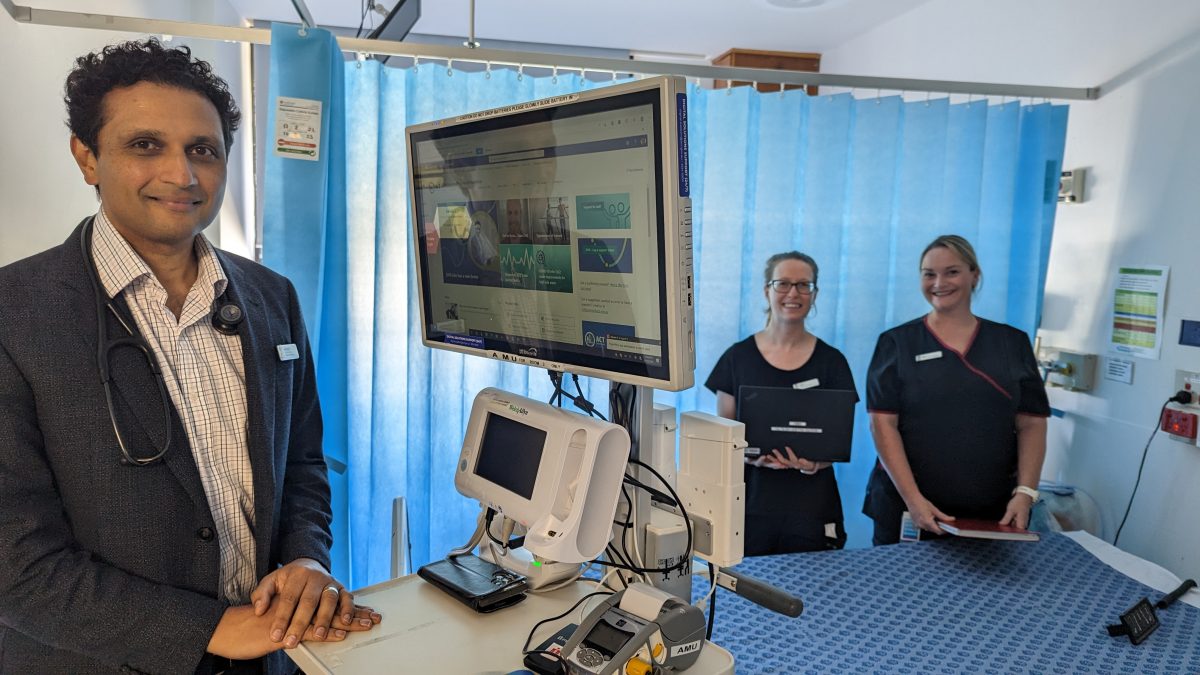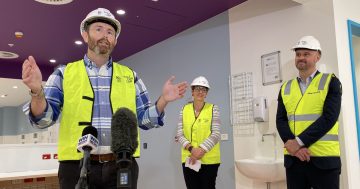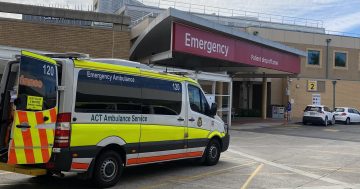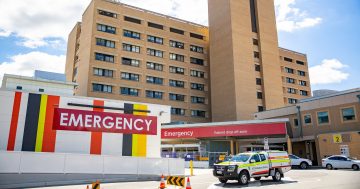
CHS clinical director of medicine Dr Ashwin Swaminathan with some of the staff in Canberra Hospital’s Acute Medical Unit. Photo: Canberra Health Services.
Canberra Hospital’s pilot Acute Medical Unit (AMU) program has been hailed a success, with the department doubling in size.
The high-acuity care service for adults was announced in 2021 as part of a $90 million suite of upgrades for the hospital.
Canberra Health Services director of medicine Dr Ashwin Swaminathan helped design the unit, and works there as a physician.
He said the unit had originally been trialled as a 12-bed facility to test the model, which had been “on the cards” for two years before it opened in December 2021.
“It showed some improvement in bed block from the emergency department, as it has an increased number of nursing and allied health staff helping people be assessed,” Dr Swaminathan explained.
The maximum stay in the unit is 48 hours, and it takes patients from the emergency department (ED) once they have been stabilised.
Dr Swaminathan said about 50 per cent would end up going home with medical supports in place, with the other half transferred to another inpatient ward.
The AMU worked to assess patients from the ED in a faster manner with a multidisciplinary team on board to plan care pathways.
“If we do these things, it can reduce waiting times, improve patient outcomes and people’s overall medical experience,” Dr Swaminathan said.
The team includes pharmacists, physiotherapists and social workers, with junior medical staff working 24/7 and senior medical staff working extended hours to give the unit higher staff-to-patient ratios compared with general inpatient wards.
To be transferred to the ward from ED you need to be above the age of 16 and have a medical illness that could warrant a hospital stay.
“The job of the emergency department is to resuscitate and stabilise patients, and identify if they need hospitalisation,” Dr Swaminathan said.
“The best place for care is not the emergency department, it’s a medical department.
“We can take quite ill patients [once they’ve been stabilised] to create more capacity for the emergency department to treat the next person waiting.”
Dr Swaminathan admitted while staffing the unit had been an issue, particularly because of COVID-19, that’s why so much planning had been needed before even the trial began.
Now they’ve been able to recruit everyone needed to expand to 24 beds, with the possibility to become even larger down the track.
“When we move into the Critical Services Building in 2024, we can increase again if required,” Dr Swaminathan said.
“At the moment, [24 beds] is sufficient, but we’ll evaluate as we go.”
The unit has been operating with 24 beds since February, and Dr Swaminathan said the data was already showing it was helping reduce ED wait times further, which he described as “heartening”.
Canberrans have long suffered extended wait times at the Territory’s emergency departments, with the recent Report on Government Services finding our EDs have the worst wait times in the country.
In addition, the Australian Medical Association’s Clear the Logjam report gave both of Canberra’s public hospitals red lights for every patient triage category (outside of resuscitation), meaning less than 84 per cent of people received care in the clinically recommended time across all categories.



















